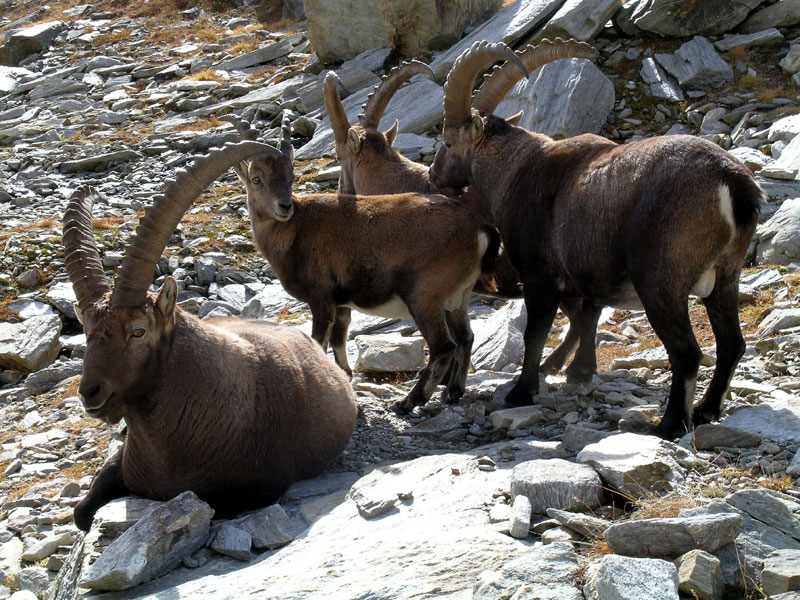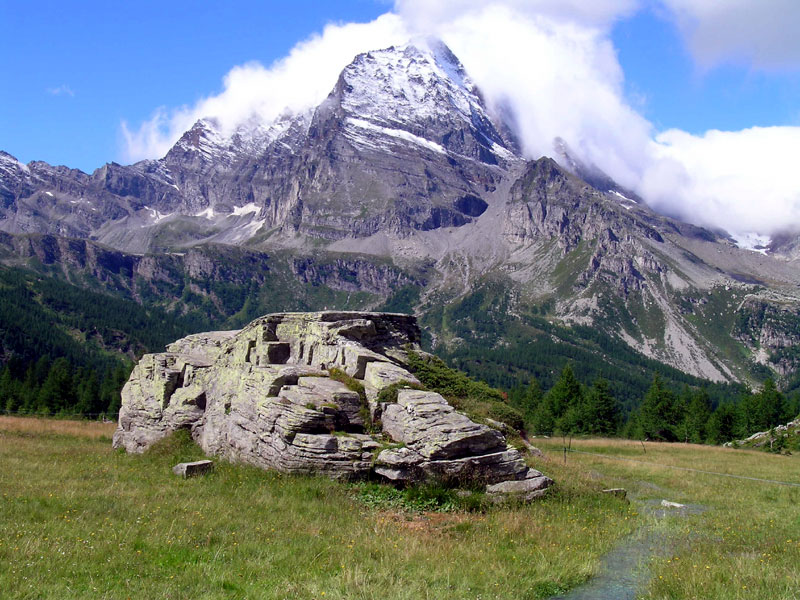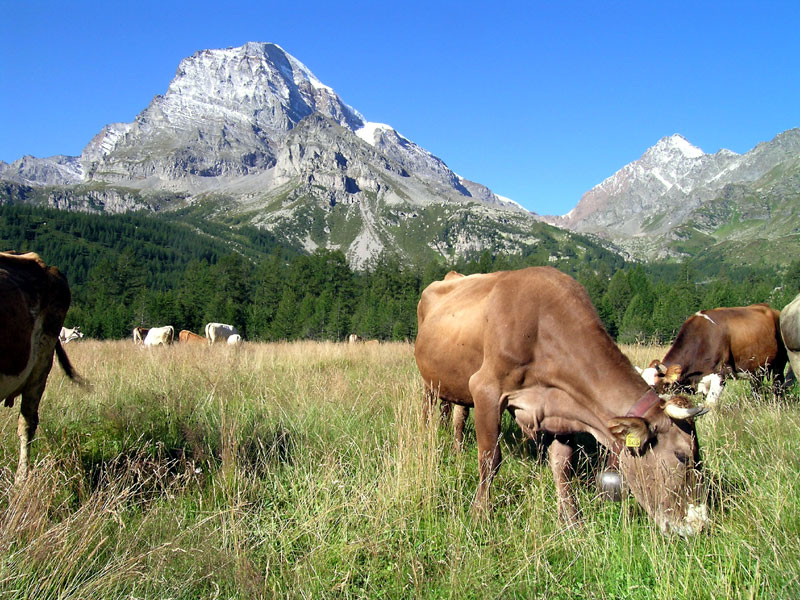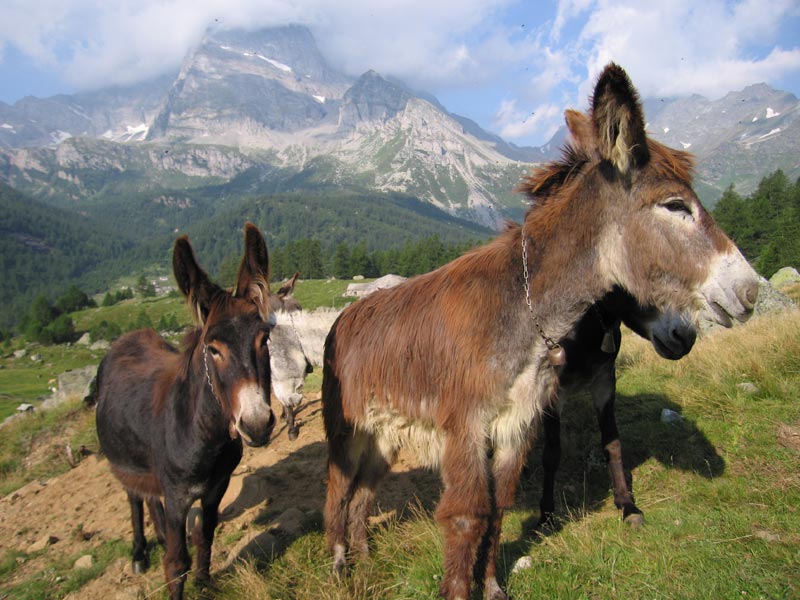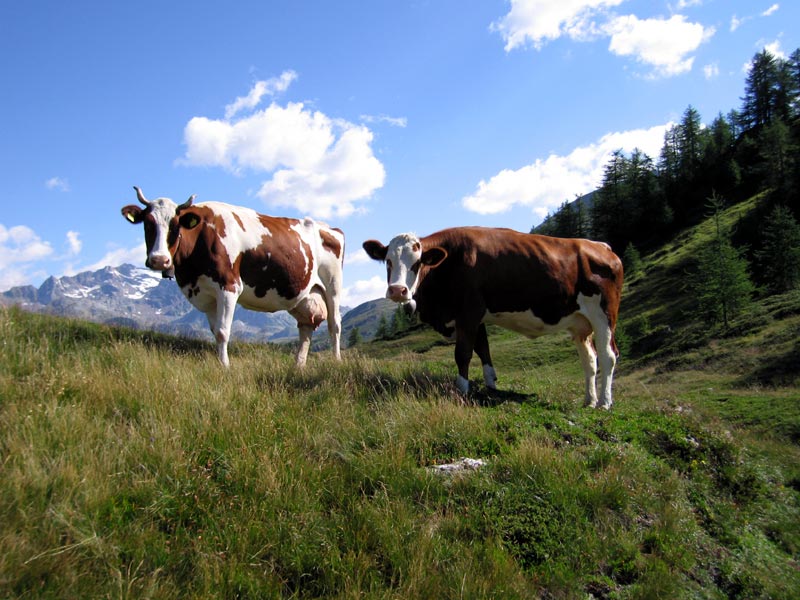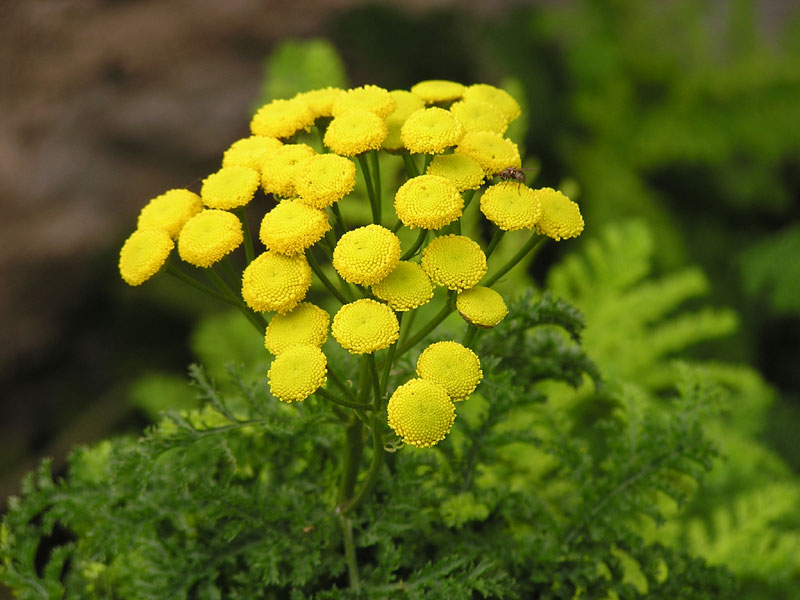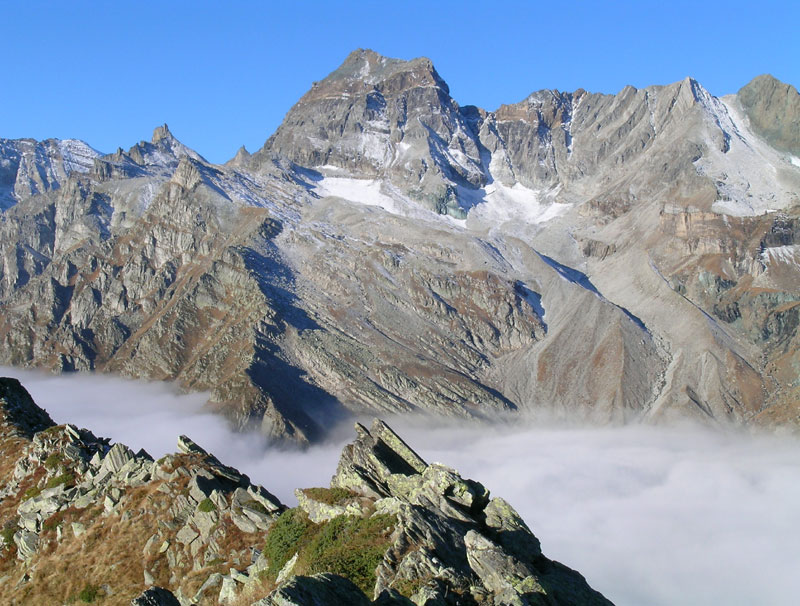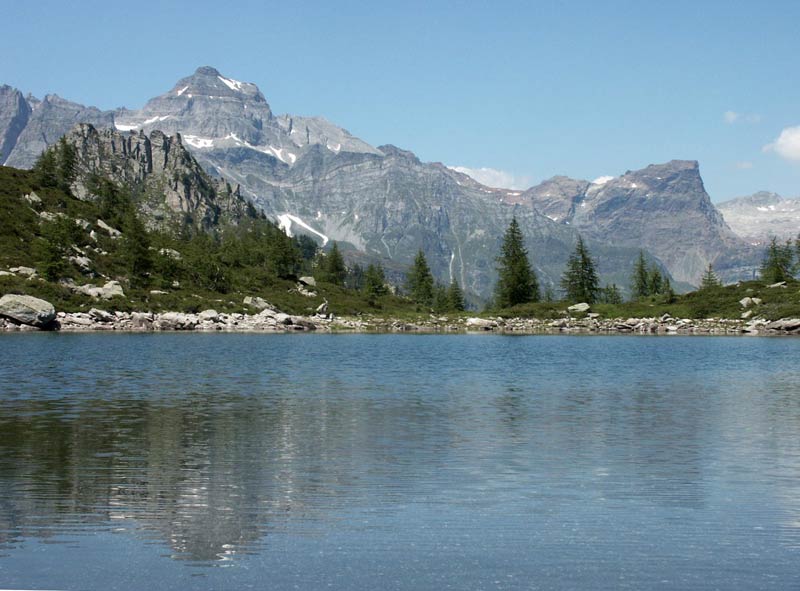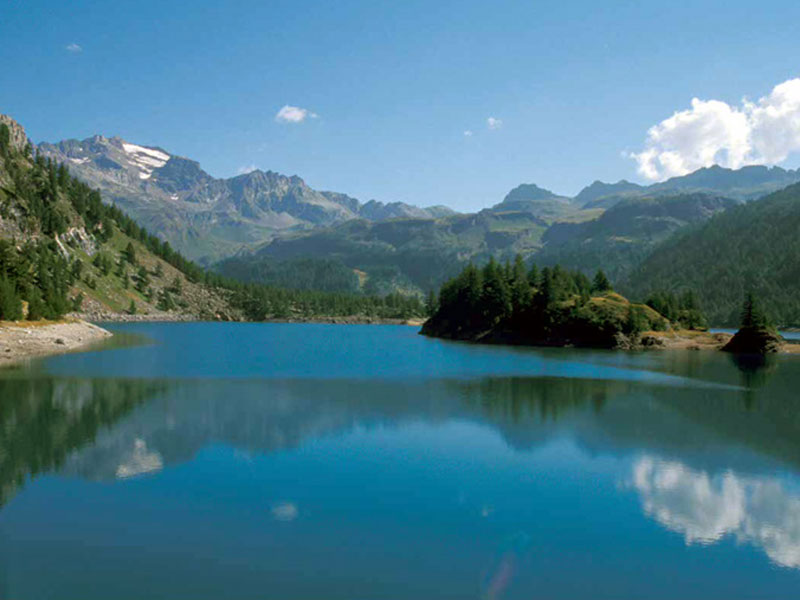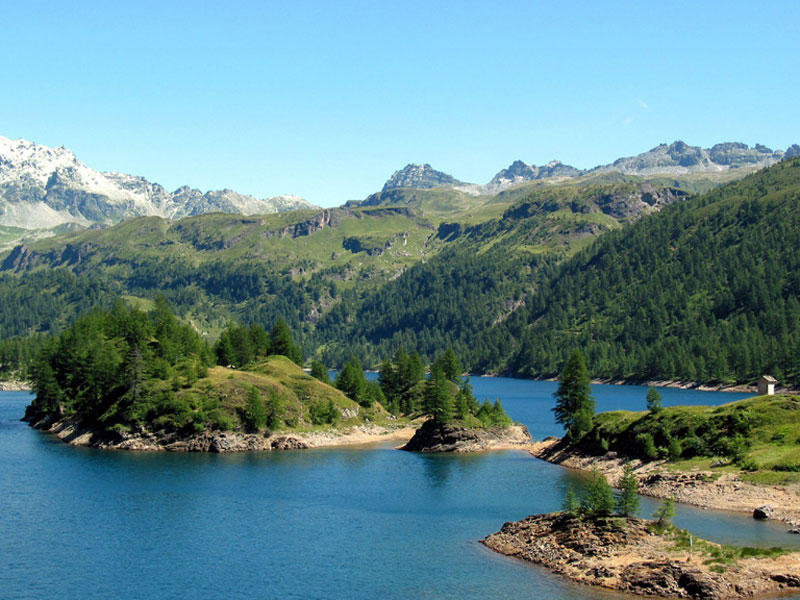Protected Area
Identity Card
- Alpe Veglia e Alpe Devero Nature Park:
- Land Surface Area: 8'593.64 ha
- Lower altitude (m): 1'600
- Higher altitude (m): 3'553
- Regions: Piemonte
- Provinces: Verbano-Cusio-Ossola
- Municipalities: Baceno, Crodo, Trasquera, Varzo
- Establishment Measures: LR 32 14/03/1995
- PA Official List: EUAP1056
- Park Authority: Ente di Gestione delle Aree Protette dell'Ossola
- Further managed Protected Areas:
- Parco Naturale dell'Alta Valle Antrona
- ZPS Alte Valli Anzasca, Antrona e Bognanco
- ZSC e ZPS Alpi Veglia e Devero - Monte Giove
Alpe Devero
(Nature Park)
The Devero valley is one of the most beautiful valleys of the
Ossola. It can be traveled over up to Goglio, and from here you can
use a comfortable mule track to get to the most interesting place of
the valley, Alpe Devero. The wide plateau is brightened up by splendid waterfalls (Inferno, Buscagna, etc.).
Surrounding the plateau there are large larch woods resting on a thick
carpet of rhododendrons and bilberries. Mixed with the larches there
are alders, willows, specimens of different species of service tree,
and rare spruce firs. The number of wetlands in the area are also
interesting and rich, both from a botanical and a wildlife point of
view.
The wildlife is characteristic of the Alps, and it includes mainly the chamois and the marmot.
Of
particular interest from an archaeological point of view are the finds
of objects dating back to the ancient Bronze Age at Arbora Pass.
Alpe Veglia
(Nature Park)
Alpe Veglia consists of a wide mountain basin (a cirque of glacial origins) limited by a mountain ring which is opened on the south-eastern side by a deep river cut linking the cirque to the main valley. It has been defined as the richest mineralogical region of the Western Alps. The wide Alpine basin is made mainly by alluvial deposits, while all around the Alpe there is a gathering of morainic detritus. The landscape is completed by lakes, streams, and waterfalls which have formed because of the molding actions which are still in progress. Interesting outcrops of dolomite rocks and limestone, included in the base formations of mica-schists and gneiss, give birth to phenomena similar to the dolomite ones.
The
vegetation is characterized by the presence of pastures and, up to
2,200m of height, of wide woods. The underwood consists mainly of
rhododendron and bilberry. Within the Park, about 320 botanical species
have been recorded, and the 22% of them is rare: among the latter, Gentiana brachyphylla, Astragalus leontinus, and Kobrenia simpliciscula.
The wildlife is very rich. Among the mammals there are the chamois, the marmot, and the mountain hare. Among the avifauna there are numerous colonies of rather rare species such as the golden eagle and the black grouse.
Of great importance are the archaeological finds in Piana del Veglia, which date back to the Mesolithic Age (about 9,000 years ago).
The Park Wildlife
During the summer at high altitudes on the wide grass terraces of the sunny slopes and during the winter at lower altitudes, a number of chamoises are a constant presence since a lot of time; the same can be said for a number of roe deers, which prefer to conceal themselves in the thick woods. On the contrary, the deers have only recently appeared, and have found in the Park an ideal territory for their reproduction. The presence of the wild goat, which has been reintroduced in the 1970s, has become a constant. The marmot, always ready to whistle in case of danger, is a cheerful friend during every tour. With its typical whistle, this curious sentinel often informs us of the presence of its main natural enemy, the golden eagle.
Much more reserved mammals are the mountain hares, the numerous foxes, the frenzied ermine, the badger, the squirrel (the badger and the squirrel can be found more frequently at lower altitudes). Among the more little and numerous inhabitants, even if it might be difficult to see them, there are the shrewmouse and the vole.
Besides the eagle, there are other birds of prey, such as the buzzard, the goshawk, the sparrow hawk, the kestrel, and among the nocturnal birds of prey there are the owl, the Tengmalm's owl, and the pigmy owl.
Among the birds there are also the rock ptarmigan and the black grouse which reach the maximum density of the whole Alpine chain within the Park; the rock partridge, the woodpeckers (the great-spotted and the black woodpecker), the dipper, the ring ouzel, the redstart, the dunnock, the whinchat, the Alpine accentor, the whitetail, the common crossbill, the snowfinch, the serin, the tits (coal tit, willow tit, crested tit), the common redpoll, the buntings, the jay, the chough, the common raven...
Among the reptiles the vipers have an important ecological function. There are many of them, but it is difficult to meet them because of their reserved and fearful character.
There are some environments which must be carefully considered: as a matter of fact, in the wetlands and in the small lakes it is possible to observe the common frog and the Alpine newt, or the fast dytiscidae and their larvae, or again the very small suspended crustacea, while big dragonflies turn here and there on the surface of the water.
Flora and Vegetation in the Park
The great variety of environments, which are different from an
ecological, climatic, and edaphic point of view, makes it possible to
find within the Park and in the adjacent areas a great variety of
vegetation, from the rich pastures of the lower altitudes to the
pioneer rock associations in the snowy valleys.
The two meadow
basins of the plains of Veglia and of Devero have similar features:
they are both very wet and marshy areas which have been progressively
drained to increase the fodder production.
However, the wetlands dominate the whole area, and they are distributed
on different altitudes. In the plain areas, the pastures are mainly
covered by Gramineae, Cyperaceae, plantain, and composit species among
which it will not be difficult to recognize the precocious crocus, the
beautiful Gentiana acaulis, Biscutella laevigata, the yellow rattle, and some orchids (Orchis sambucina, O. maculata, and Nigritella nigra).
A
wide surface of the territory, from 1,500 and 2,000m, is covered by
woods which mainly consist of larches at high altitudes, while when you
descend you can find the spruce fir, the silver fir, and broadleaf
trees, among which there are different species of Sorbus (S. Aucuparia, S. Chamaemespilus, and S. aria), willows, alders, very rare birches, and the vegetation increases. On
the calcareous mountain slopes, which are sweeter and present less
obstacles, the wood is more extended, while on the slopes of the steep
siliceous mountains it is more widely-spaced and interrupted by rocks,
and by the gorges caused by avalanches or landslides.
The characteristic
underwood of the larch wood is made of a carpet of rhododendron and
bilberries. If you are lucky, walking through the larches and on not
very shaded slopes, you can find one of the most beautiful among the
endemic Alpine flowers: the rare Aquilegia Alpina.
Going beyond the wood's boundaries, the vegetation becomes shorter and
thinner: the rhododendron moorland goes towards the high altitudes,
conquering again the territories of the pastures in disuse.
At higher altitudes the open and sunny areas are dominated by Gramineae
and Cyperaceae grasslands. Here, in the areas where the plants are not
even protected by the snow and are continuously attacked by the wind,
they must bear annual temperature ranges of almost 80°C!
When you reach the moraines, the detritus, and the rocks, the colors
of the flowers become more and more intense to draw the attention of
the pollination insects. Here it is possible to admire the heywood, the
miosotys azzurro, the glacier crowfoot, and the Alpine aster, together with the male and female genepi (they are two different species: Artemisia genepi and A. mutellina), and many others.
This journey throughout the environment is of course too brief to
describe the countless aspects of the Park vegetation. However, it
might give to visitors some suggestions to look at the surrounding
environment more carefully: it is an important step towards the
understanding of the complexity of nature. We must remember that it is
easy to trample upon what we are looking at with superficiality or what
we simply do not notice.
The Natural Environment
As far as its geological formation are concerned, Veglia-Devero area is part of the Western Alps domain and of a complex structure consisting of the superimposition of structural units called "ricoprimenti" (coatings). These units are different one from the other both from a geological and a petrographic point of view, they derive from the formation process of the Alpine chain, and they have been subsequently modified by the action of glaciers and of rivers until they reached the current aspect.
The brown-reddish rocks of the coating IV - or the Berisal coating - outcrop in the north-western part of Veglia and only marginally in the Devero area. Together with the pale gneissic rocks of the coating III - or the Mount Leone coating - they contribute to the formation of great part of the spectacular ridges delimiting the Park and they can be observed on the eastern slope of Mount Leone and on the rocky walls of the Cervandone where, because of their different colors, the rocks' fold is particularly evident.
From a mineralogical point of view, the Park's district is one of the most interesting areas of the Alpine chain. In particular, Mount Cervandone has become famous for the variety of the unique minerals which have been found in the gneissic rocks: asbecasite, cafarsite, cervandonite, chernovite, gasparite, tilasite, are only some examples of the mineralogical species identified, which amount to 127 in the whole area.
The presence of serpentinite enhances the color of the summits of the Rossa, of the Crampiolo, and of the Marani. The main mineral present in this rock is the serpentine, which in this area presents unique characters: it is extremely compact, with an intense coloring and a foliated structure, and it represents a particular variety called "antigorite" (from the Antigorio Valley).
Leaving the summit of the mountains, we return to the Veglia and Devero basins, which were once great cirques of glacial origin.
The molding action of the glacier has left visible traces of its history. It is not difficult to find the arched and striped rocks which have been modeled by the erosive action of the ice (on the southern part of Lake d'Avino or at the Rossa Pass).
The isolated blocks of rock are usually the erratic blocks, that is rocks transported by a glacier and deposited in unusual places when it melted.
Another consequence of the glaciation phenomenon is the formation of moraines, which are masses of detritus deposited because of the withdrawal of a glacier, and which are particularly evident at the foot of the Glacier d'Aurona.
It is exactly the contrast between different environments and sceneries which makes so fascinating the walks along the Park's paths. The careful visitor will see a wonderful world made of many little things which those who are in a hurry will not be able to grasp and appreciate.




